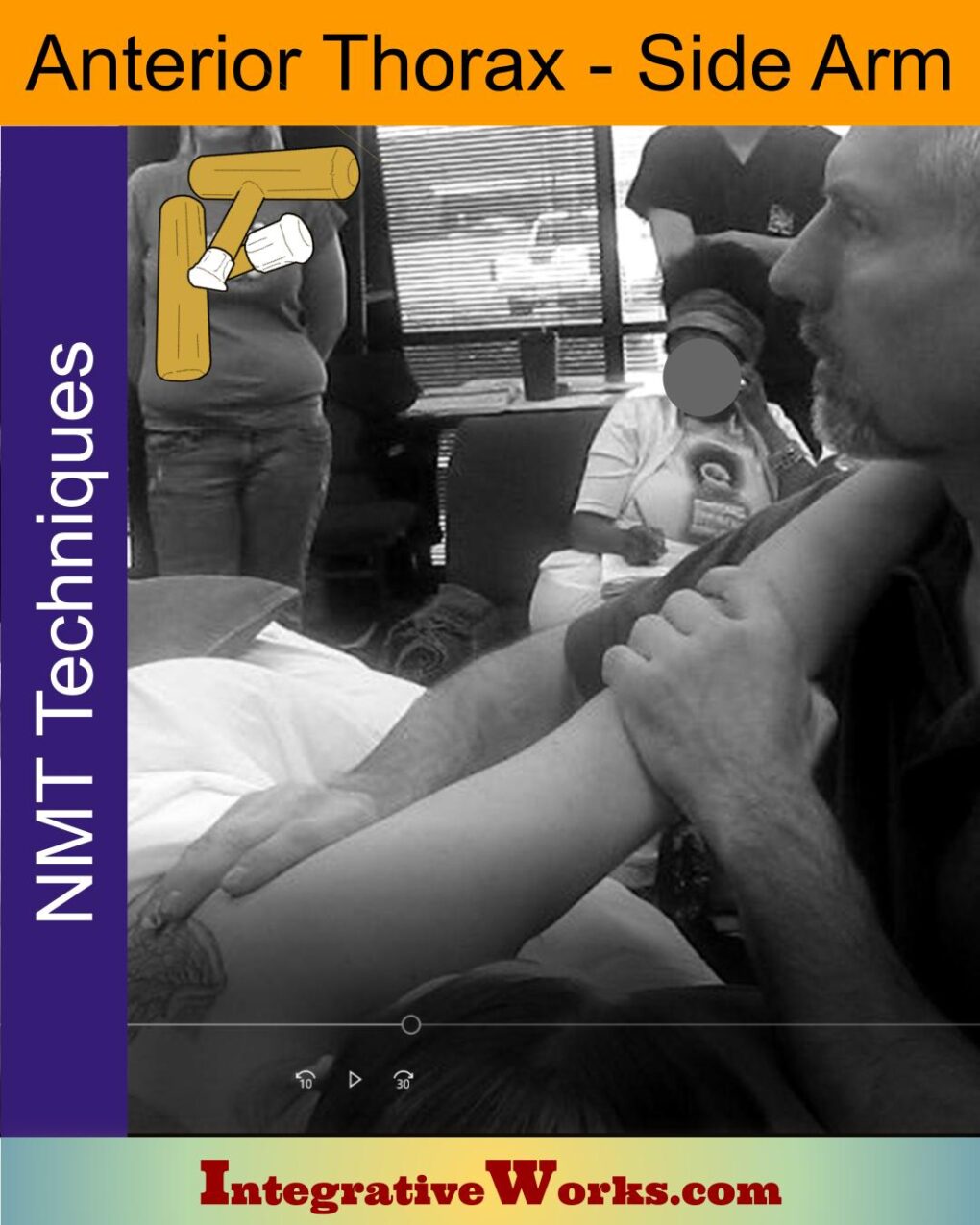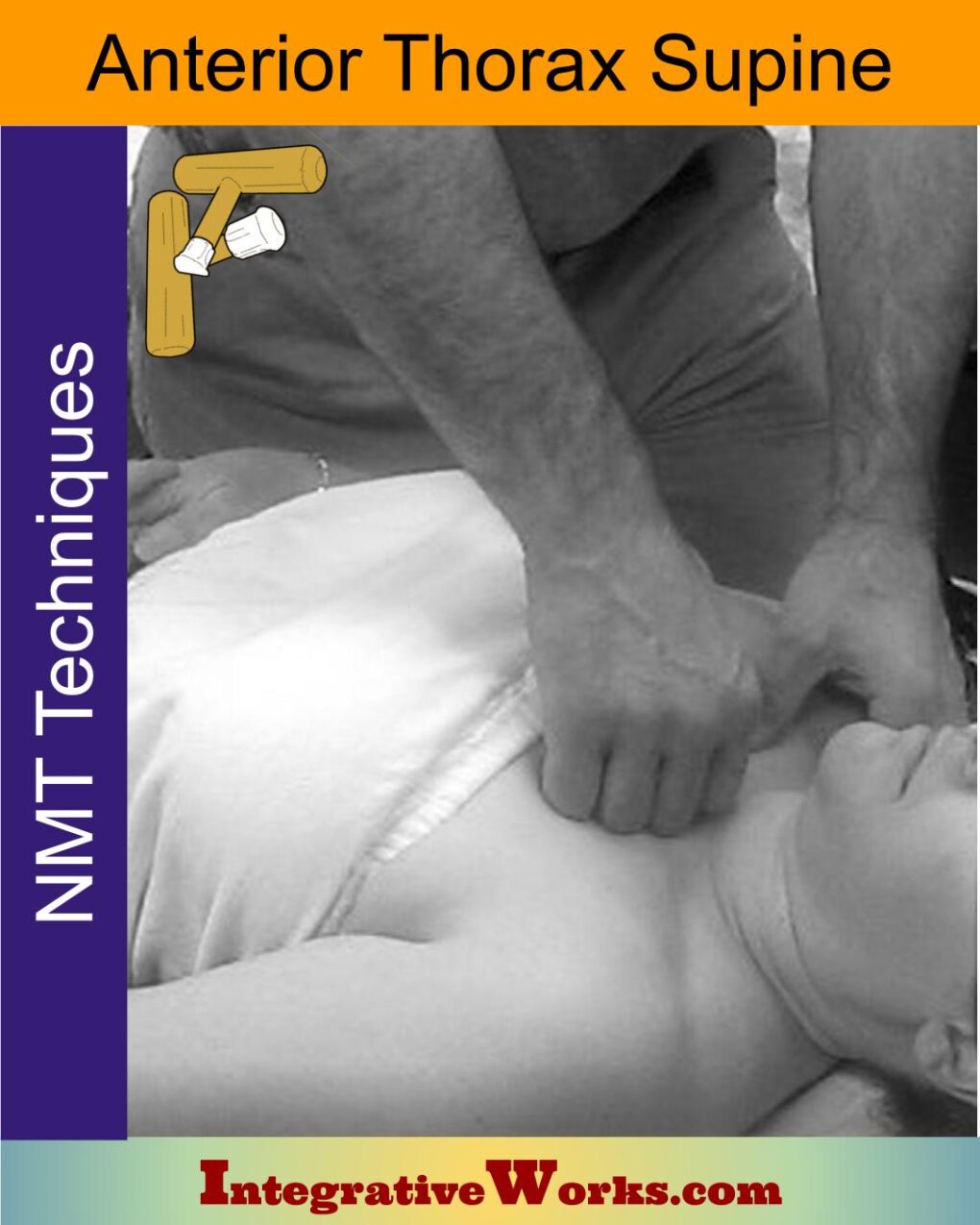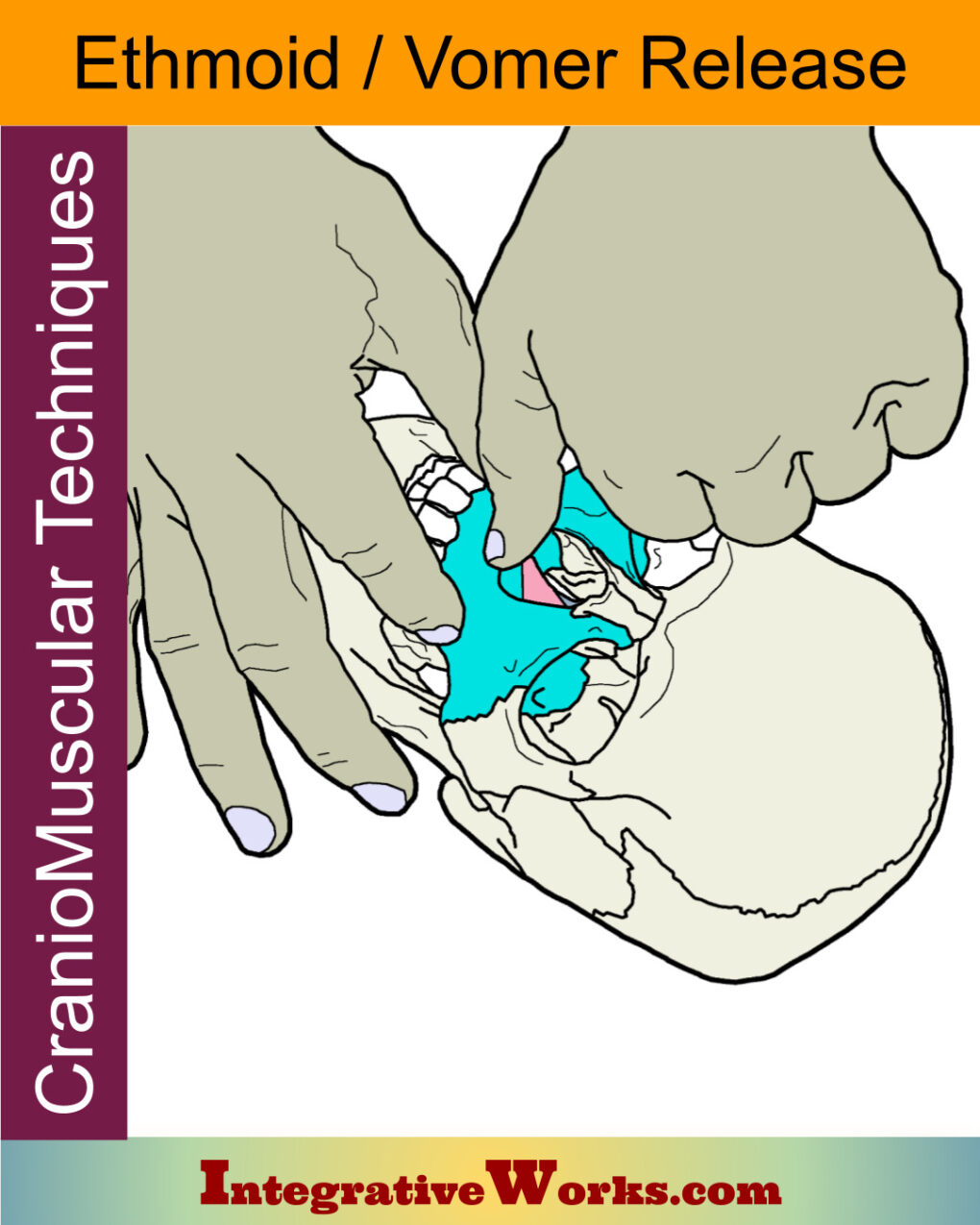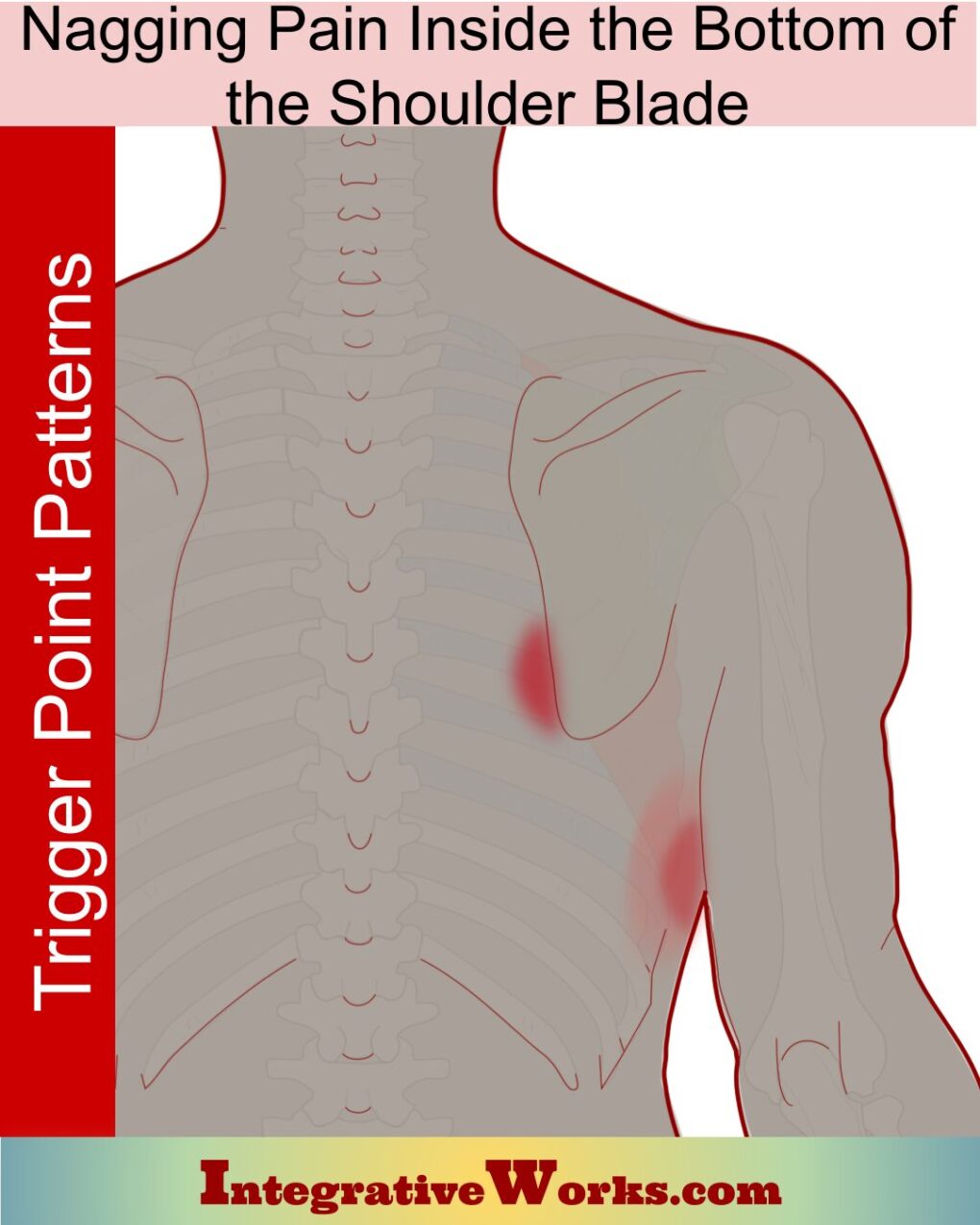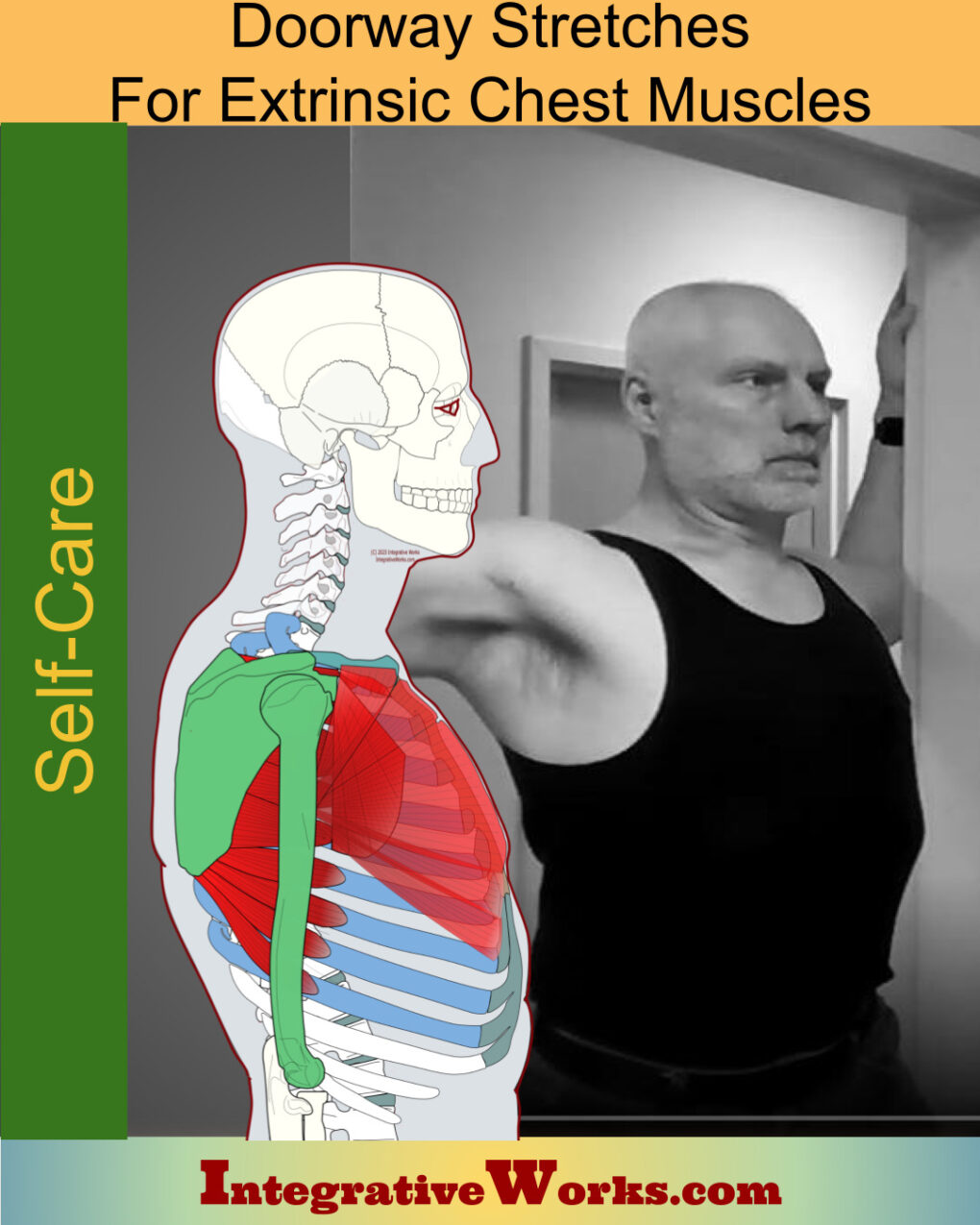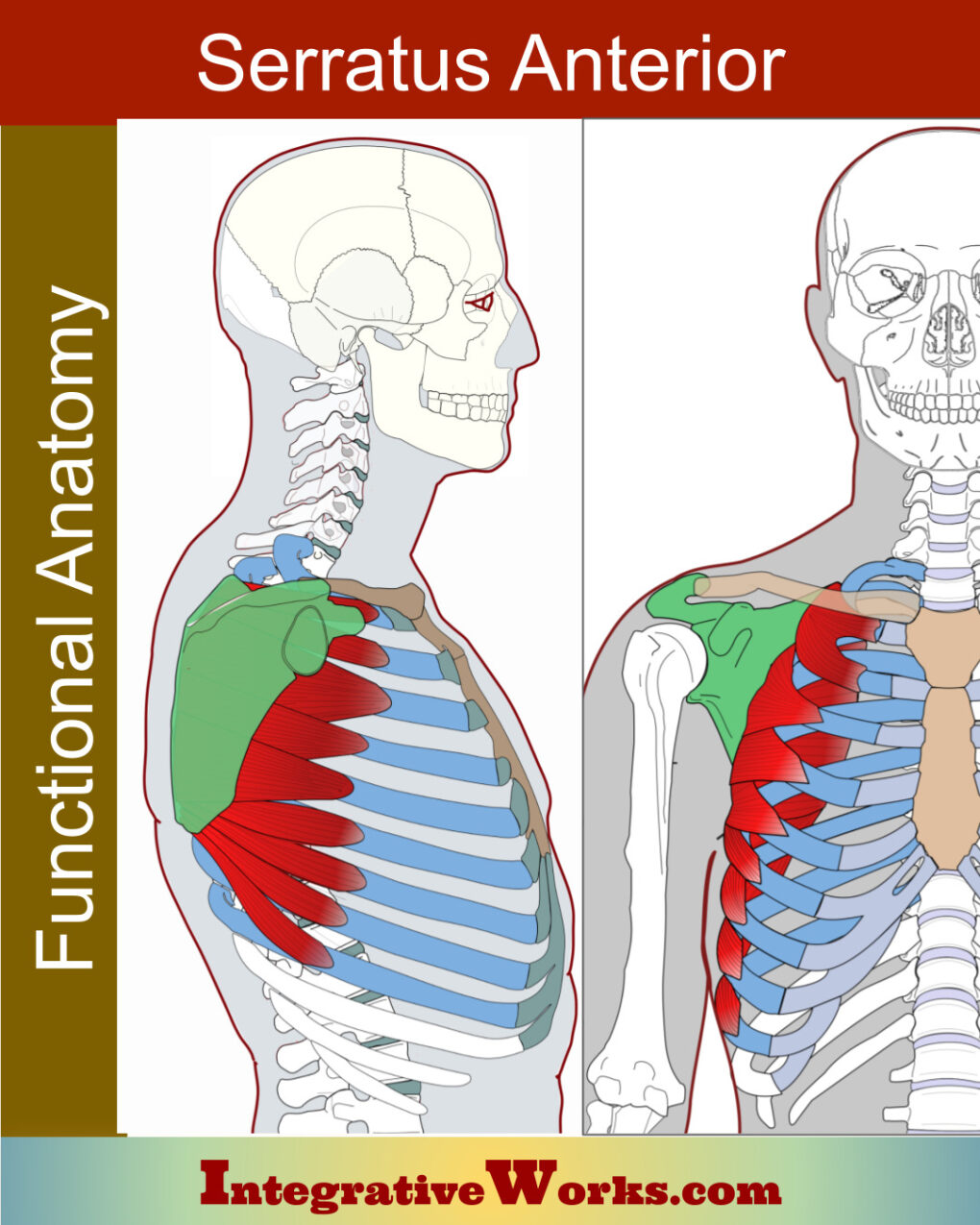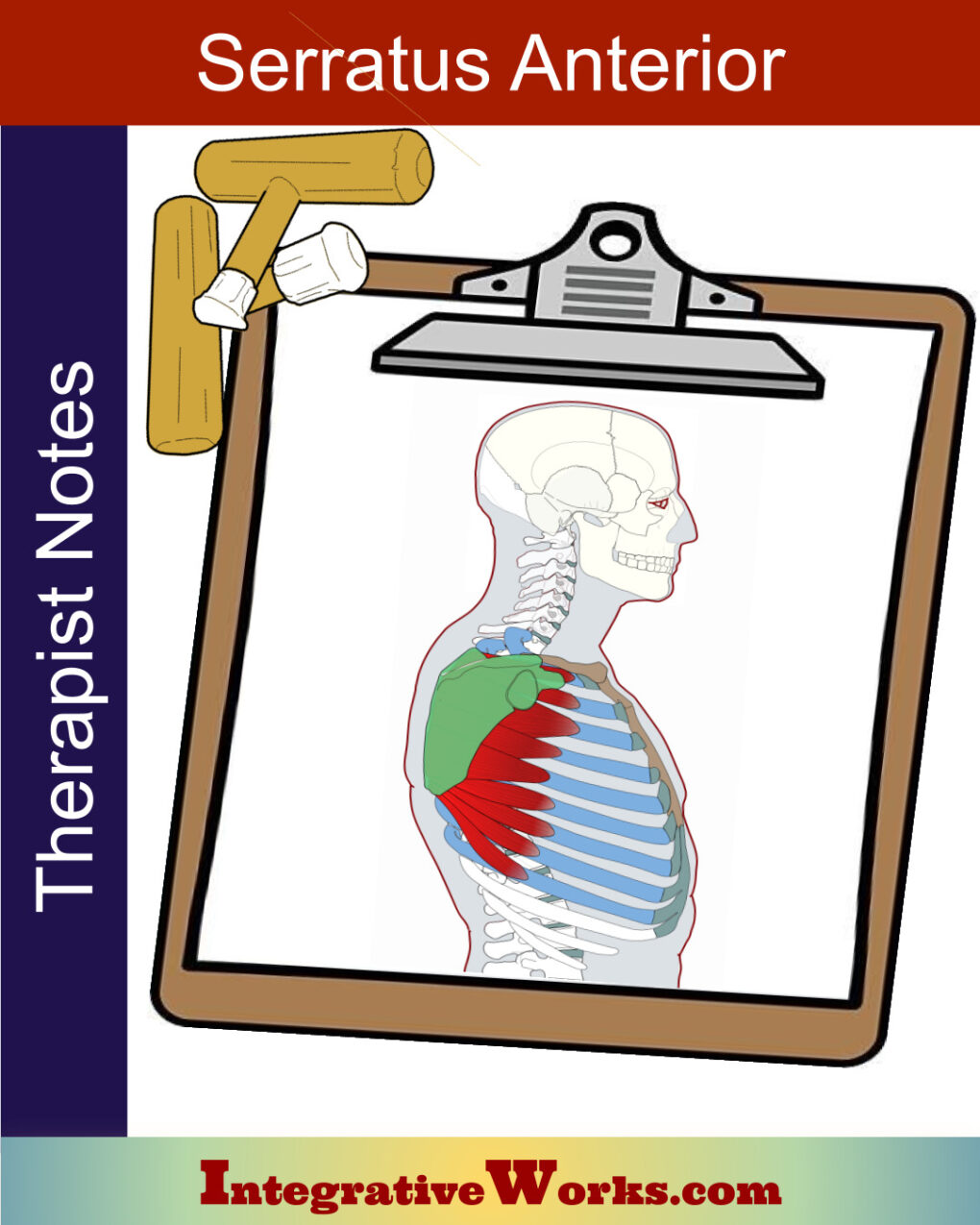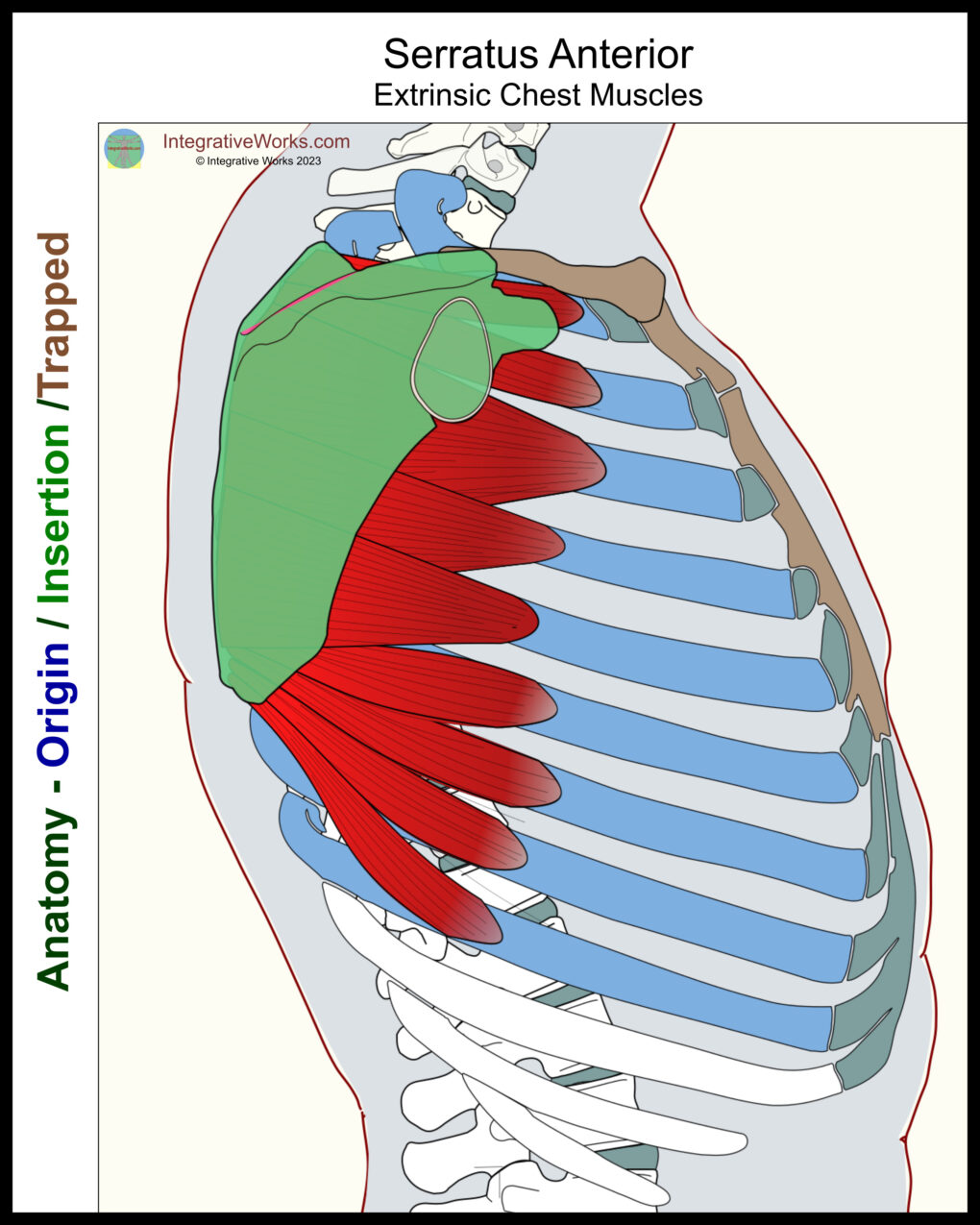
Overview
The serratus anterior has complex and variable anatomy. It is a broad, flat muscle with multiple bellies. It usually has eight sections, connecting the scapula’s vertebral border to each of the first eight ribs. Therefore, this structure makes it an extrinsic chest muscle. It is on the lateral trunk, under the scapula, extending like a fan through the axilla onto the anterior thorax.
It has three sections. Each section is named for its position: superior, middle, and inferior.
Origin
- superior section – anterior aspect of the first and, usually, second rib
- middle section – anterior aspect of ribs 3-5
- inferior section – anterior aspect of ribs 6 – 8.
Insertion
- superior section – the superior angle of the scapula
- middle section – vertebral border of the scapula
- inferior section – the inferior angle of the scapula
Function
All heads protract the scapula. However, each head also has another function.
- superior – protraction and downward rotation of the scapula
- intermediate – protraction and elevation of the scapula
- inferior – protraction, depression, and upward rotation of the scapula
Innervation
- Long thoracic nerve, C5-7
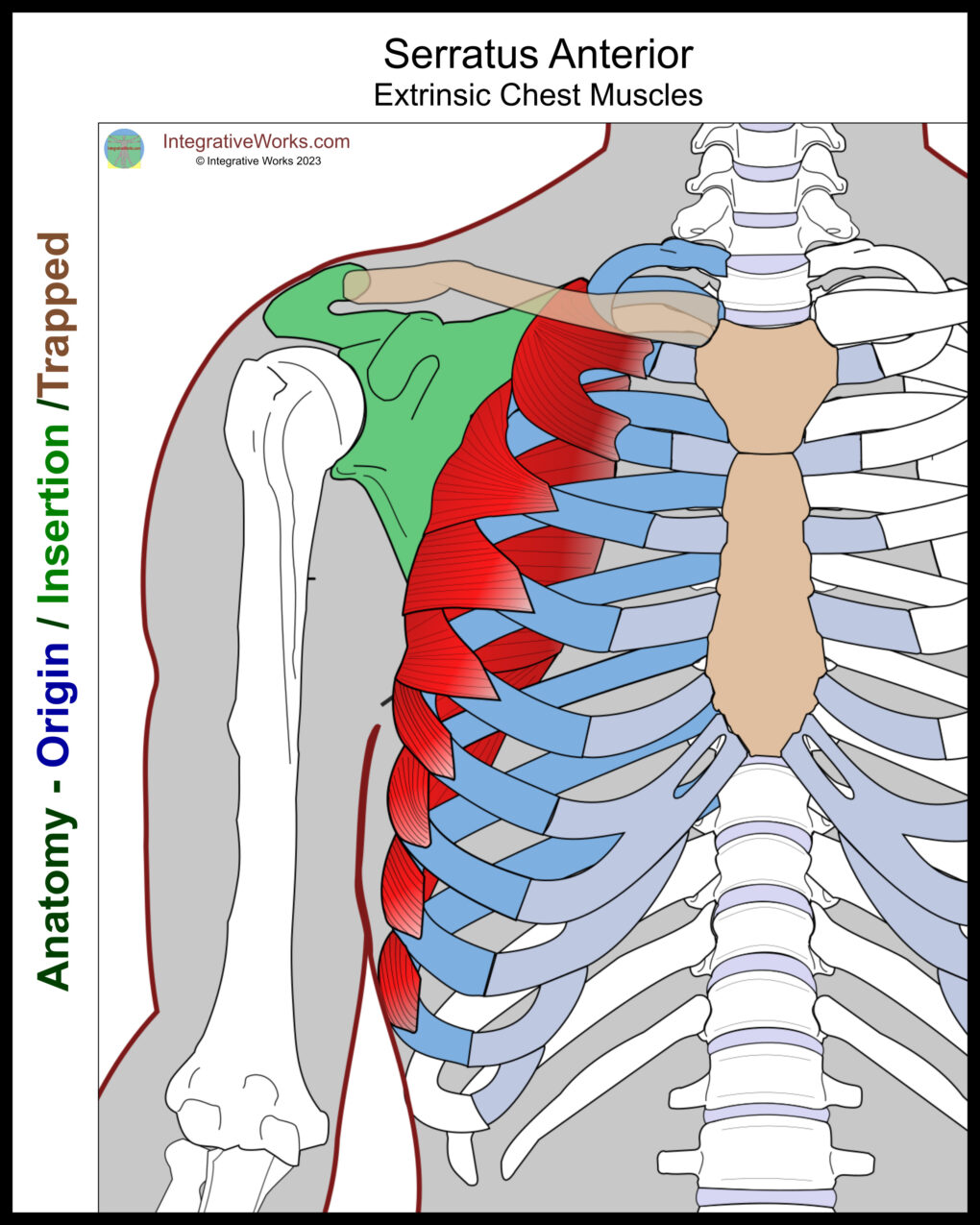

Attachment Details
Upper Section
The upper section has bellies that extend between the upper scapula and ribs. This section attaches anteriorly to the first and second ribs and the fascia of the thorax. However, there is some variance in the rib attachments. In fact, the superior section does not always extend onto the second rib.
Middle Section
The middle section attaches to the vertebral border of the scapula. The first belly attaches to the upper vertebral border and extends to the nearby 3rd rib. As the attachment of this belly continues down the vertebral border, the fibers extend upward at about 45 degrees. Consequently, these fibers get progressively longer as they extend toward a more anterior aspect of the 3rd rib. This structure forms a flat, triangular lamina. Next, the origin of the middle belly extends further down the vertebral border. Those fibers extend up to attach to the 4th rib. This insertion is shorter than the insertion of the belly attaching to the 3rd rib. Finally, the origin of the lower belly originates near the inferior angle of the scapula. It inserts along the 5th rib in an attachment that is shorter than the belly above.
The middle bellies attach along the medial border and elevate the scapula. At the same time, the scapula moves anteriorly so that the shoulders shrug. This posture appears as elevated shoulders with a caved chest.
Inferior Section
The lower section has finger-like projections that extend from the lower angle of the scapula. These bellies project anteriorly and inferiorly. They connect the lower angle of the scapula to the 6th, 7th, and 8th ribs. They are visible as the chevrons on the lower lateral ribs of the anterior thorax. There may be slips that attach as low as the 12th rib. One study revealed that they vary from one side to the other in the same cadaver 30% of the time.
The lower section draws the lower angle toward the lower ribs. This action moves the scapula anterior and inferior. It also assists in the upward rotation of the scapula.
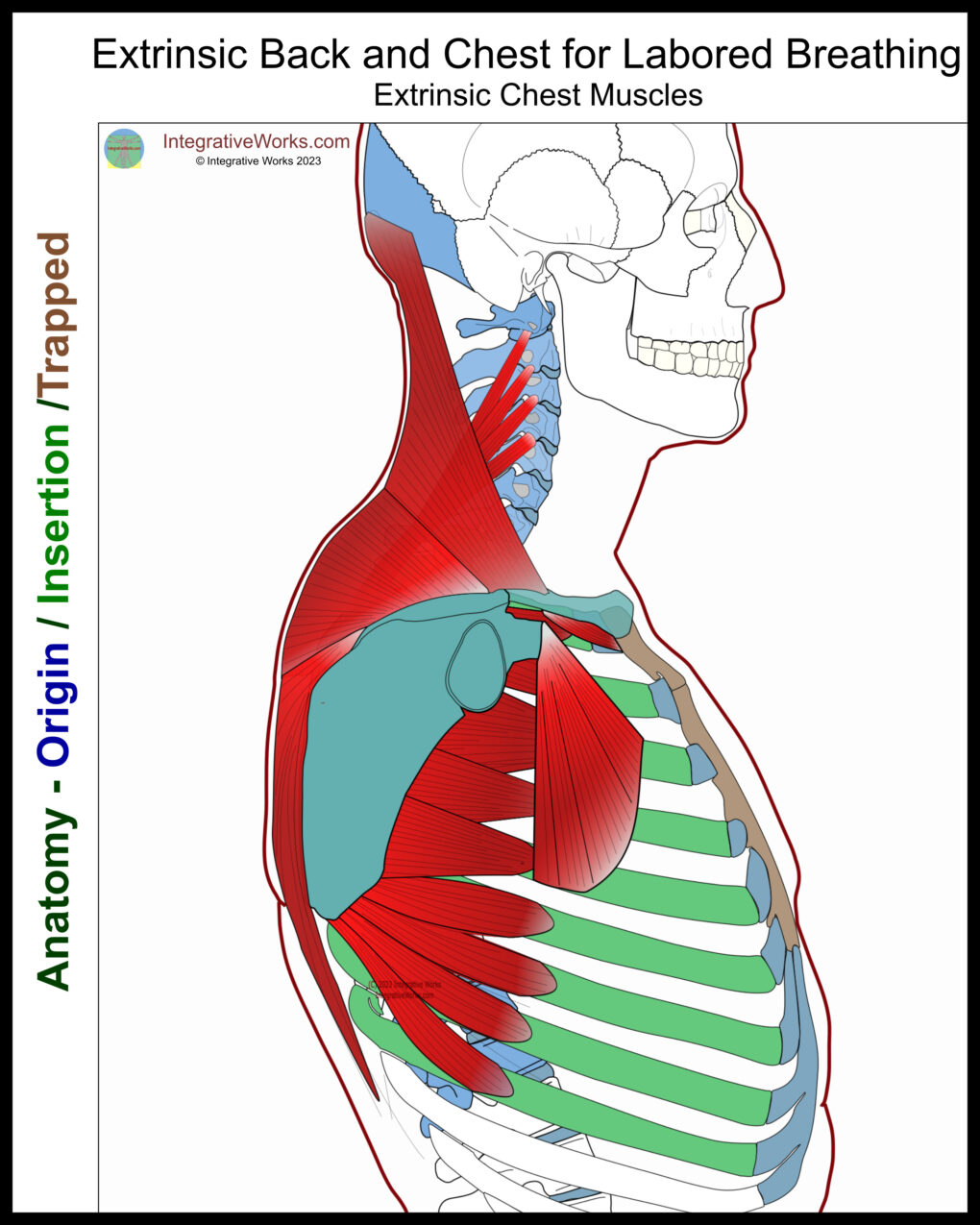
Breathing and Posture
Seated Breathing
Serratus anterior lifts the rib cage in combination with muscles like the sternocleidomastoid and scalenes. When the diaphragm is weak or inhibited, the serratus anterior accommodates breathing. Practically put, these muscles help you breathe when you are hunched forward at your desk or slumped on the couch.
Labored Breathing
When the extrinsic back muscles stabilize the scapulae, the serratus anterior expands the chest cavity. It, with pectoralis minor, is positioned to both elevate and widen the thoracic cavity. As a result, it dramatically increases lung capacity during labored breathing. With the muscle listed in the paragraph above, one can get dramatically more air after demanding exercise like sprinting.
Postural Support
Also, the serratus anterior is very involved in the postural support of the ribs. It acts as fingers that extend to the lateral ribs to support the ribs in extending the trunk.
It is a crucial part of stabilizing the scapula. Usually, it assesses as weak in scapular winging.
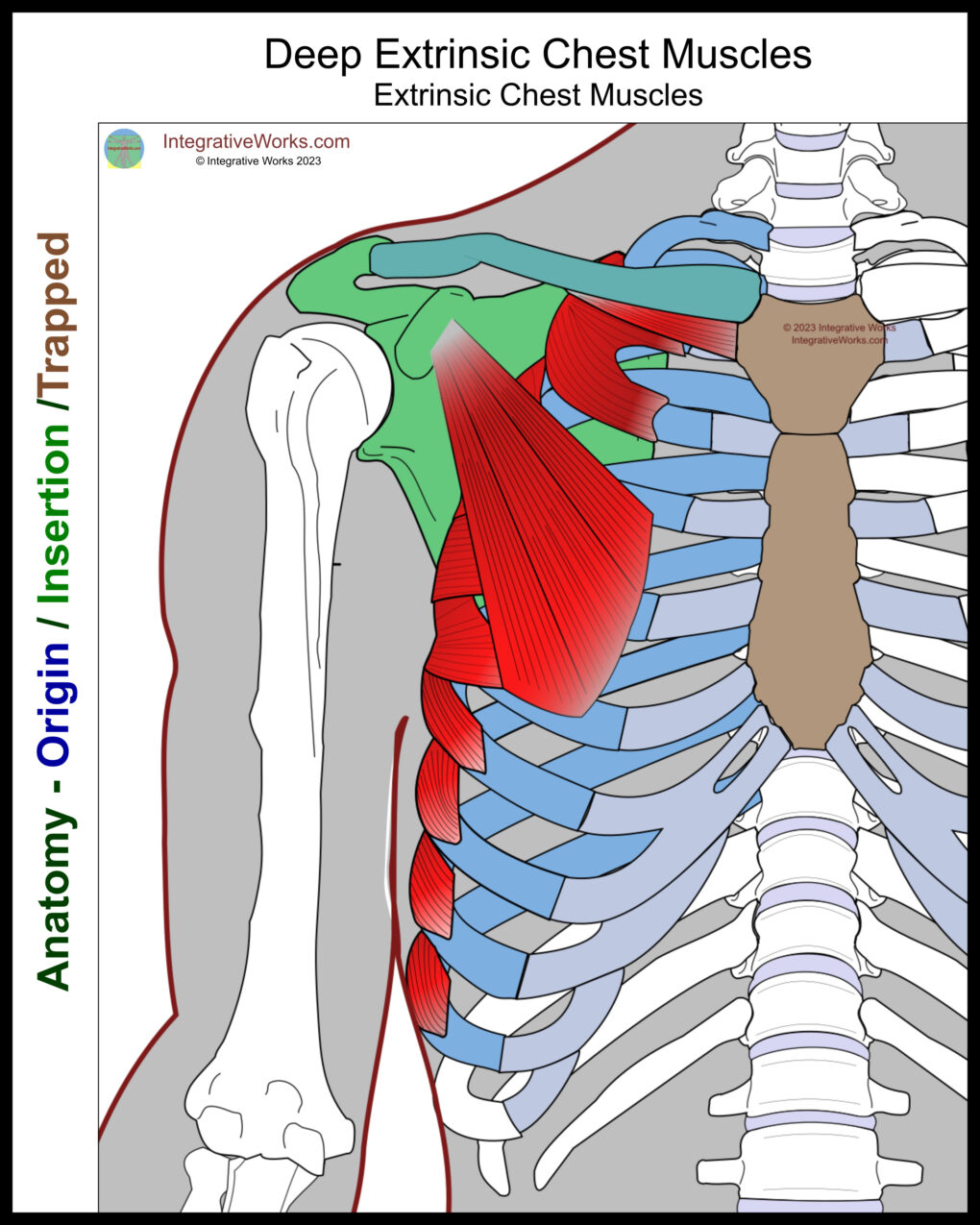
Anomalies, Etc.
The anatomy of the serratus anterior has statistically significant anomalies. For example, one study showed seven to ten bellies, with 48% of cadavers having eight bellies.
Upper Section
The upper section varies in its attachment along the scapula. Some cadavers show significantly greater areas of attachment along the superior border than others. Studies show that it attaches to the second rib about half the time.
Middle Section
The intermediate head, which attaches to the vertebral border, is also variable in the number of heads and ribs of attachment. This section attaches just under pec minor, which is also variable in the number of heads and attached ribs. The two work together to protract the scapula from front and back. I have not seen studies indicating that these anomalies match from one cadaver to another.
Inferior Section
The lower section is also quite variable in the number of heads and attached ribs. Studies show it extends as low as the 12th rib. Also, studies show it ending as high as rib 6.
Related Posts
Anterior Thorax (Chest) – Side Arm – Neuromuscular Massage Protocol
Anterior Thorax Supine – Neuromuscular Massage Protocol
Assessment of Pain in Yoga
Ethmoid / Vomer Distraction
Extrinsic Chest Muscles – Functional Anatomy
Nagging Pain Inside The Bottom of the Shoulder Blade
Self Care – Doorway Stretches for Chest Muscles
Self Care – Relief from Coughing
Self-Care – Nagging Pain Inside The Bottom of the Shoulder Blade
Serratus Anterior – Functional Anatomy
Therapy Notes – Serratus Anterior
Support Integrative Works to
stay independent
and produce great content.
You can subscribe to our community on Patreon. You will get links to free content and access to exclusive content not seen on this site. In addition, we will be posting anatomy illustrations, treatment notes, and sections from our manuals not found on this site. Thank you so much for being so supportive.
Cranio Cradle Cup
This mug has classic, colorful illustrations of the craniosacral system and vault hold #3. It makes a great gift and conversation piece.
Tony Preston has a practice in Atlanta, Georgia, where he sees clients. He has written materials and instructed classes since the mid-90s. This includes anatomy, trigger points, cranial, and neuromuscular.
Question? Comment? Typo?
integrativeworks@gmail.com
Interested in a session with Tony?
Call 404-226-1363
Follow us on Instagram

*This site is undergoing significant changes. We are reformatting and expanding the posts to make them easier to read. The result will also be more accessible and include more patterns with better self-care. Meanwhile, there may be formatting, content presentation, and readability inconsistencies. Until we get older posts updated, please excuse our mess.

